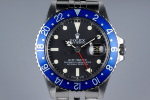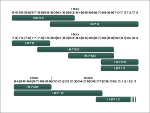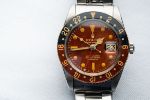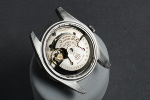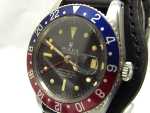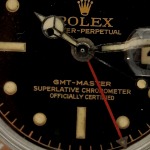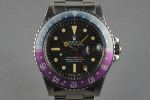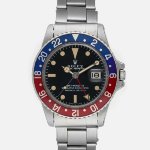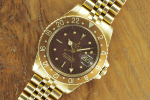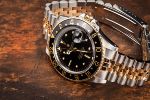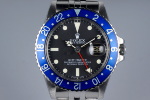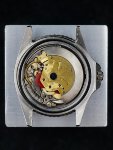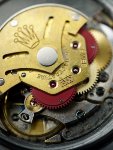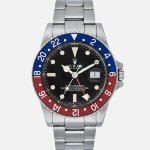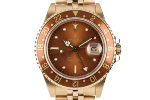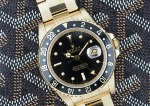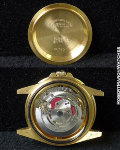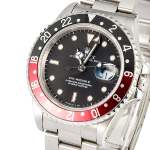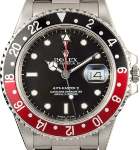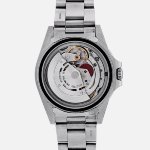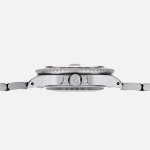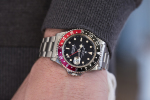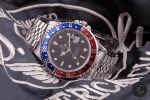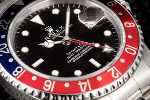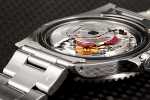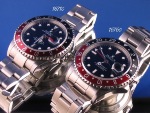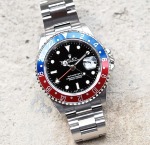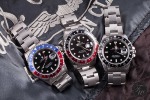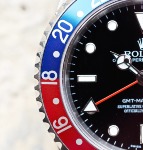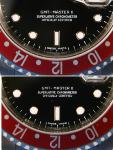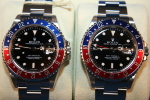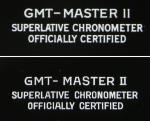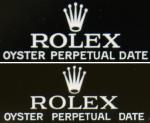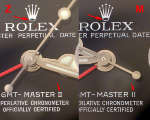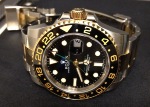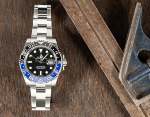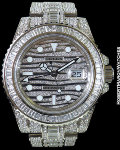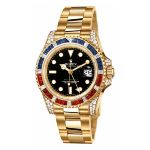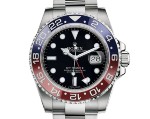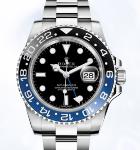This thread is a compilation of information about the Rolex GMT Master and GMT Master II.
There is a lot of content here, so to help find relevant information I've added an index at the end of this post.
History of Rolex GMT Master
The Rolex GMT Master was first issued in 1954. It was originally designed as an aviator watch in cooperation with Pan American Airways. In the 1940s and 1950s, flying distances got longer and the pilots travelled through multiple time zones. In the 1950s, Pan Am asked Rolex to develop a watch that could tell different times simultaneously.
The watch was a breakthrough for pilots. The newly introduced fourth hand, in conjunction with the rotating bezel, allowed pilots to display two time zones.
The watch received its name from Greenwich Mean Time (GMT). At that time, GMT was the world's time standard and was used in aviation planning.
The purpose of the two-tone bezel was to help the wearer distinguish between day and night.
There have been relatively few changes in the watch over the years. The original bezel was a Bakelite bezel, which was replaced in 1956 with a stronger metal bezel. In 1959, a crown guard was added, along with a dial inscription that said "Superlative Chronometer Officially Certified." Different bracelet options were offered, including leather strap, jubilee, and oyster bracelets.
GMT Master compared to GMT Master II
In 1983, Rolex released the GMT-Master II. The GMT II looked virtually identical to the original GMT . The differences were on the inside. The GMT used a quickset date and relied on a rotating bezel to read a second time zone. The GMT
II has, in addition to a rotating bezel, an independent hour hand and 24 hour hands, so the wearer can compute a third time zone. So the movement of the GMT II includes a quickset hour hand that is locally adjustable. On the GMT II, local time can be set without stopping the second, minute or 24-hour GMT hand.
The GMT and GMT II were simultaneous produced until Rolex discontinued the Master in 1999. The GMT II is a little thicker than the Master.
Here is a side-by-side comparison (GMT on the left, GMT II on the right):

Index of information in this thread
GMT 6542
GMT 1675
GMT 16750
GMT 16700
GMT II 16760
GMT II 16710
GMT II 16710 bezel insert numbers
GMT II 16710 variations and anomalies
GMT II 116710
GMT reference timeline
GMT serial / year guide
How to determine a Caliber 3185 from 3186 through crown rotation
Three New GMT II Models Released March 2018
There is a lot of content here, so to help find relevant information I've added an index at the end of this post.
History of Rolex GMT Master
The Rolex GMT Master was first issued in 1954. It was originally designed as an aviator watch in cooperation with Pan American Airways. In the 1940s and 1950s, flying distances got longer and the pilots travelled through multiple time zones. In the 1950s, Pan Am asked Rolex to develop a watch that could tell different times simultaneously.
The watch was a breakthrough for pilots. The newly introduced fourth hand, in conjunction with the rotating bezel, allowed pilots to display two time zones.
The watch received its name from Greenwich Mean Time (GMT). At that time, GMT was the world's time standard and was used in aviation planning.
The purpose of the two-tone bezel was to help the wearer distinguish between day and night.
There have been relatively few changes in the watch over the years. The original bezel was a Bakelite bezel, which was replaced in 1956 with a stronger metal bezel. In 1959, a crown guard was added, along with a dial inscription that said "Superlative Chronometer Officially Certified." Different bracelet options were offered, including leather strap, jubilee, and oyster bracelets.
GMT Master compared to GMT Master II
In 1983, Rolex released the GMT-Master II. The GMT II looked virtually identical to the original GMT . The differences were on the inside. The GMT used a quickset date and relied on a rotating bezel to read a second time zone. The GMT
II has, in addition to a rotating bezel, an independent hour hand and 24 hour hands, so the wearer can compute a third time zone. So the movement of the GMT II includes a quickset hour hand that is locally adjustable. On the GMT II, local time can be set without stopping the second, minute or 24-hour GMT hand.
The GMT and GMT II were simultaneous produced until Rolex discontinued the Master in 1999. The GMT II is a little thicker than the Master.
Here is a side-by-side comparison (GMT on the left, GMT II on the right):

Index of information in this thread
GMT 6542
GMT 1675
GMT 16750
GMT 16700
GMT II 16760
GMT II 16710
GMT II 16710 bezel insert numbers
GMT II 16710 variations and anomalies
GMT II 116710
GMT reference timeline
GMT serial / year guide
How to determine a Caliber 3185 from 3186 through crown rotation
Three New GMT II Models Released March 2018
Last edited:



